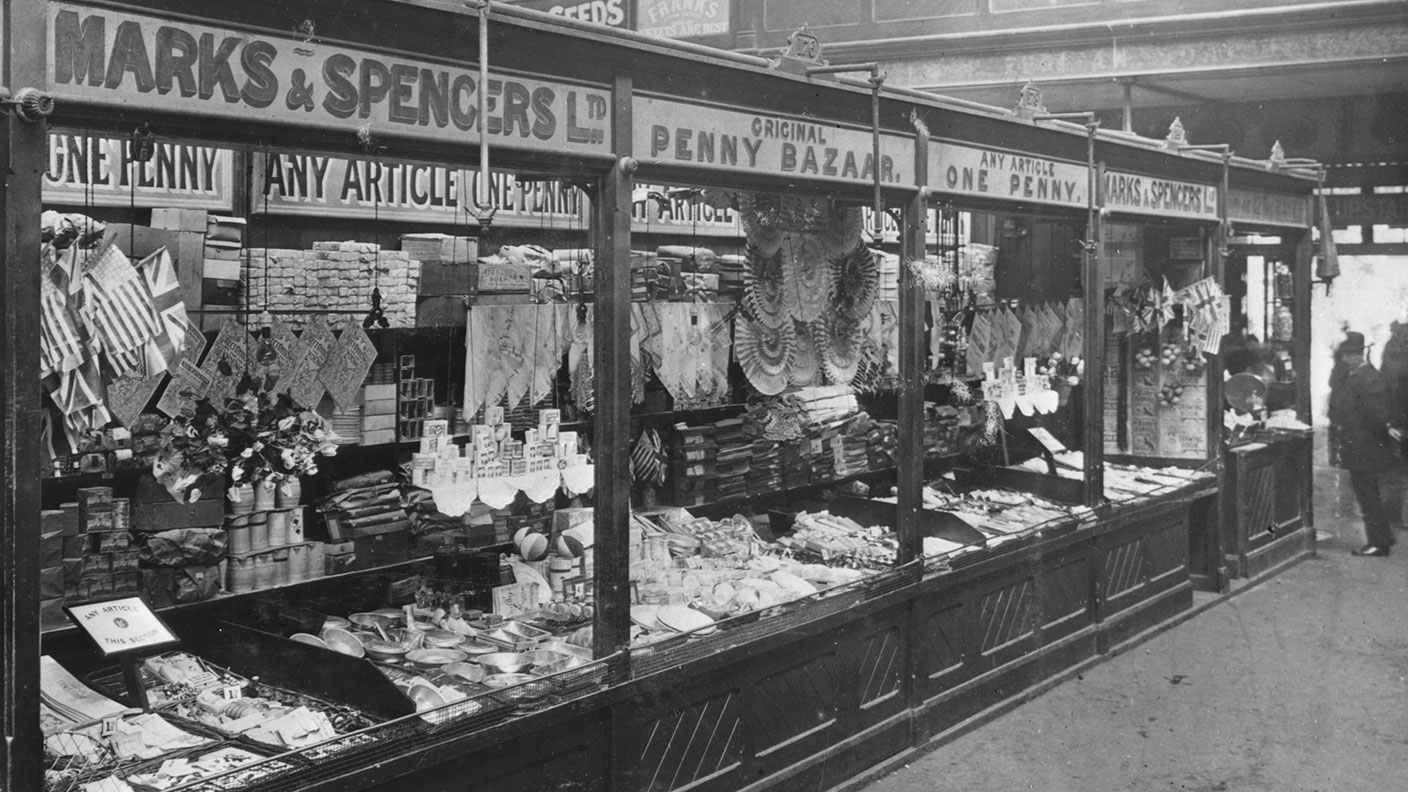28 September 1894: Marks & Spencer opens its first 'Penny Bazaar'
On this day in 1894, Michael Marks and Tom Spencer opened their first ‘Penny Bazaar’ market stall in Leeds.

With a reputation for good quality, if occasionally slightly dull, merchandise, and as the grocer to Britain's middle classes (alongside Waitrose), it's perhaps a little surprising to find out that solid, dependable Marks & Spencer started out life as the 19th-century equivalent of a pound shop in the north of England.
Michael Marks was a refugee from eastern Europe. Originally from Slonim in Belarus, he made his way to Leeds, where he set up a stall in Kirkgate Market.
With business going well, he took on a partner, Tom Spencer, who invested £300 into the business. And on 28 September 1894, the first "Marks & Spencer Penny Bazaar" was born. The stall sold household goods and haberdashery, and, as the name suggested, everything cost one penny.
MoneyWeek
Subscribe to MoneyWeek today and get your first six magazine issues absolutely FREE

Sign up to Money Morning
Don't miss the latest investment and personal finances news, market analysis, plus money-saving tips with our free twice-daily newsletter
Don't miss the latest investment and personal finances news, market analysis, plus money-saving tips with our free twice-daily newsletter
The business expanded quickly, so that by 1900, Marks & Spencer boasted 36 market stalls and 12 high-street shops.
In the 1920s, M&S changed direction to begin selling clothes, and built up a formidable reputation for selling quality pants and bras. It also changed its pricing policy – goods could now cost anything up to five shillings.
Marks & Spencer built a business selling goods that were exclusively from British suppliers. The brand, "St Michael", was named in honour of its founder, Michael Marks. However, commercial pressures meant that by the 1990s the British-only policy was quietly abandoned.
The company continued to expand right up until the end of the 20th century. Profits peaked in 1997-1998. But it has struggled to keep pace with both quickly changing fashions and the rise of nimbler competition. It was demoted from the FTSE 100 in September 2019, but it remains a retail bellwether, with a market capitalisation of £2bn.
Get the latest financial news, insights and expert analysis from our award-winning MoneyWeek team, to help you understand what really matters when it comes to your finances.
Ben studied modern languages at London University's Queen Mary College. After dabbling unhappily in local government finance for a while, he went to work for The Scotsman newspaper in Edinburgh. The launch of the paper's website, scotsman.com, in the early years of the dotcom craze, saw Ben move online to manage the Business and Motors channels before becoming deputy editor with responsibility for all aspects of online production for The Scotsman, Scotland on Sunday and the Edinburgh Evening News websites, along with the papers' Edinburgh Festivals website.
Ben joined MoneyWeek as website editor in 2008, just as the Great Financial Crisis was brewing. He has written extensively for the website and magazine, with a particular emphasis on alternative finance and fintech, including blockchain and bitcoin.
As an early adopter of bitcoin, Ben bought when the price was under $200, but went on to spend it all on foolish fripperies.
-
 My 6.5% Nationwide regular saver is due to mature - what are my options?
My 6.5% Nationwide regular saver is due to mature - what are my options?Nationwide’s 6.5% regular saver is due to mature for those who opened one last year. Here is what you can do now to make the most of your savings
-
 Leading European companies offer long-term growth
Leading European companies offer long-term growthOpinion Alexander Darwall, lead portfolio manager, European Opportunities Trust, picks three European companies where he'd put his money

